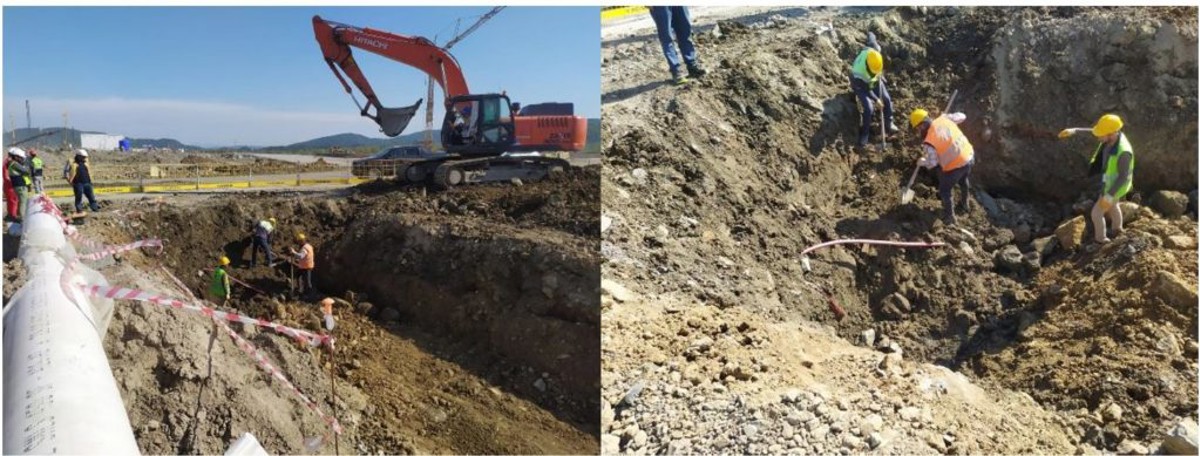Live sub-surface power cable inadvertently cut
- Safety Flash
- Published on 1 November 2022
- Generated on 18 December 2025
- IMCA SF 24/22
- 2 minute read
Jump to:
A high potential near miss occurred during onshore preparations for a pipeline installation when an excavator cut into an energised power cable.
What happened?
Trenching activities for the onshore pipeline installation were being completed. During the trenching works, the excavator operator inadvertently cut into an energised three-phase 21.6kVA power cable buried at approximately 2 metres.
Upon finding the cable an “All Stop” was called, personnel immediately evacuated from the immediate area, and the area of works secured. Company management and the client were informed. There were no injuries to personnel nor damage to excavating equipment.
The client subsequently de-energised the power to ensure the cable was no longer “live”, and a registered electrician then repaired the cable and brought the cable back into service.

What went wrong?
Our member noted the following issues:
- Work Planning
- The cable had been installed two years before by the client’s subcontractor, before our member was involved.
- Investigation found that the cable was not reported on the initial as-built report.
- Review of client-supplied drawings found that the power cable was noted as a ‘future cable’; and should not have been in its as-found location.
- Control of Work
- The cable was live with no isolation in place.
- During the excavation works there was a spotter in place but there was no expectation of finding a cable.
- Risk Assessment
- During the risk assessment process covering the excavation and trenching work, this cable hazard was not identified, and therefore a cable tracker application was not included as a key control measure.
Our member took the following actions:
- Prior to all operations we must remember the “7T’s” – Take The Time To Think Things Through.
- Consideration of use of the IOGP Life-Saving Rules “Start Work checklists”, to verify that controls/safeguards designed to prevent fatalities and serious injuries are in fact in place and functioning.
- Excavation works to ensure consideration of “Live” sub surface cable hazards during work planning and risk assessments with cable trackers as a primary control.
- Ensure that the obligation and expectation to exercise the stop work authority is clearly communicated and understood by all parties across all operations.
Related Safety Flashes
-
IMCA SF 06/20
19 February 2020
-
-
IMCA SF 03/22
28 January 2022
-
IMCA SF 06/12
25 June 2012
IMCA Safety Flashes summarise key safety matters and incidents, allowing lessons to be more easily learnt for the benefit of the entire offshore industry.
The effectiveness of the IMCA Safety Flash system depends on the industry sharing information and so avoiding repeat incidents. Incidents are classified according to IOGP's Life Saving Rules.
All information is anonymised or sanitised, as appropriate, and warnings for graphic content included where possible.
IMCA makes every effort to ensure both the accuracy and reliability of the information shared, but is not be liable for any guidance and/or recommendation and/or statement herein contained.
The information contained in this document does not fulfil or replace any individual's or Member's legal, regulatory or other duties or obligations in respect of their operations. Individuals and Members remain solely responsible for the safe, lawful and proper conduct of their operations.
Share your safety incidents with IMCA online. Sign-up to receive Safety Flashes straight to your email.